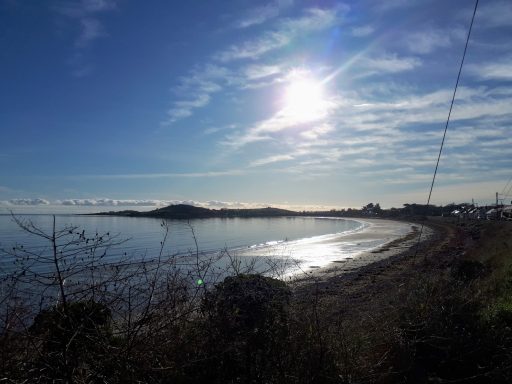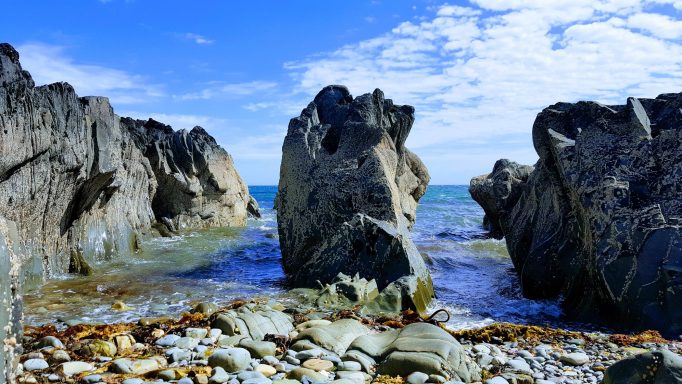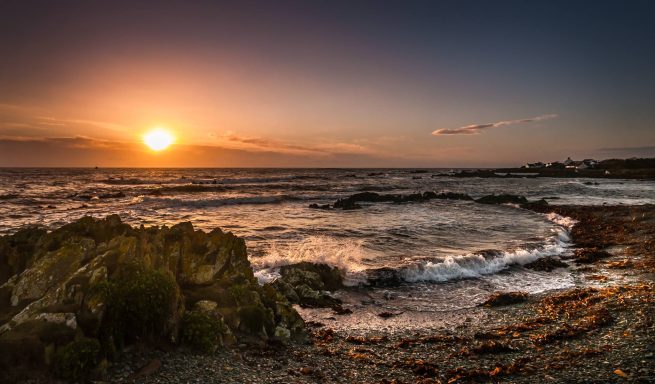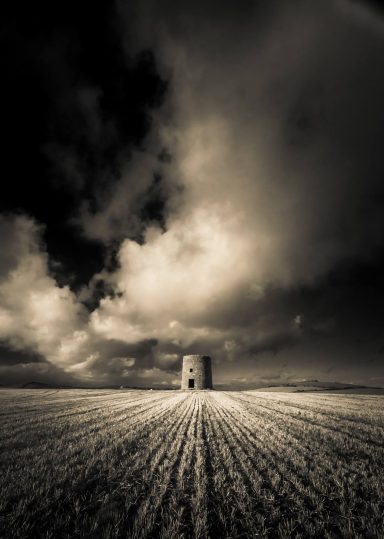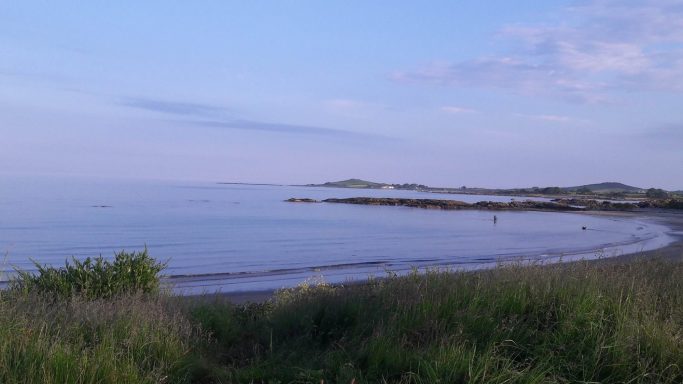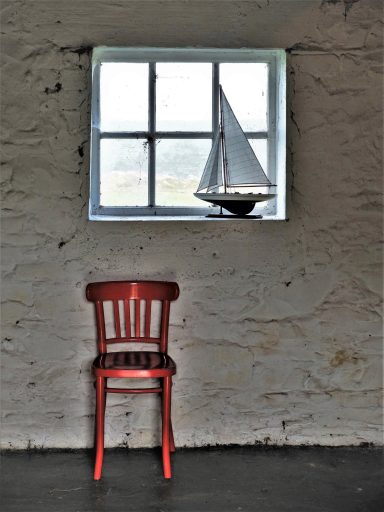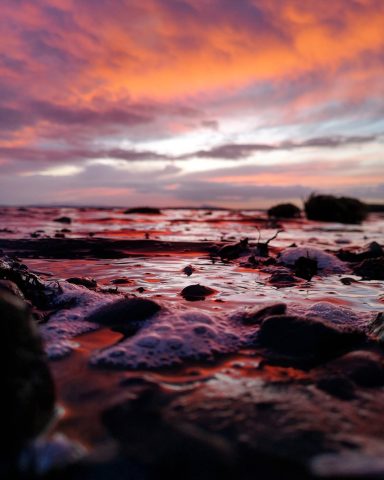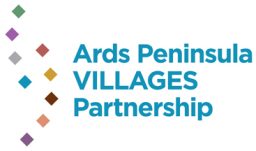Cloughey
Superb silver sandy shores

Picnics and paddling
Outstanding scenery, and a rich and rare history waiting for you to explore
Cloughey boasts a long beautiful beach, ideal for walkers and watersports enthusiasts; the beach is serviced by a long carpark with a common.
Cloughey Bay is very wide, but also shallow, which allows for safer bathing and paddling. The tide comes in right up to the edge, but when the tide goes out it leaves a extensive sandy shore that is ideal for exercising dogs and horses.
There is an excellent children's playpark on the shore, opposite the primary school, and a Somme Memorial Garden to stop and take quiet reflection.
Enjoy extensive unbroken views across the Irish Sea to the Isle of Man and Scotland.
Places worth visiting nearby
These are just a few of the interesting places waiting for you to explore in and around Cloughey

Castleboy
The remains of a tower house believed to be 15th Century can be seen to the left from the road to Portaferry from Cloughey where the road begins to twist.
The Castle was active until at least the late 17th Century. It was the commandery of the Ards belonging to the Knights of the military order of St. John of Jerusalem (who are now called the Knights of Malta), who were instituted to protect the Christians of the Holy Land and pilgrims going to Jerusalem.
The castle was destroyed before 1744, where reference is made to "the late monastery of St John of Jerusalem".

Kearney Village
A showpiece village carefully restored by the National Trust to give the authenticity of a traditional fishing village.
The village lies three miles to the east of Portaferry, with views across to Scotland, the Isle of Man and the Mountains of Mourne. The Trust owns a number of cottages at Kearney and these have been restored in the vernacular style giving authenticity to this place of character.
From Kearney village there are attractive walks to the beach at Knockinelder, and along the shore to Stinking Point. The paths lead through lichen-covered slaty rocks and coastal grassland studded with spring squill on the promontories. The small, sheltered bays are made up of shingle and saltmarsh, with the yellow horned poppy, an unusual plant of the area.

Kirkistown Castle
The precise date of the construction of Kirkistown Castle has been debated recently, but it is traditionally believed to have been built by Roland Savage of Ballygalget in 1622, possibly reusing an earlier site.
The castle comprises of a three storey tower house within the remains of a bawn (fortified enclosed space) and a later barn. There has been gradual subsidence of the tower house over the centuries as its foundations were not built to accommodate the marshy ground. In the late 19th century buttresses and two iron braces were added to halt movement in the walls.
The tower has been subjected to numerous alterations over its history and was extensively remodelled in a neo-gothic style in the early 19th century.
Look for a lane at Main Road, Cloughey BT22 1JB

Slans Graveyard
The graveyard is situated within a former rath, or ringfort, an enclosure of the first millennium A.D, and is surrounded by a white wall. Within it are the ruins of a medieval church which is believed to be the Church of Ardmacossce or Ardmacaisse, mentioned in the Taxation of Pope Nicholas, 1306 , along with an unusual cross-carved boulder. Aerial photography has indicated that the graveyard is in fact the nucleus of a much larger enclosure, which survives below ground in the surrounding fields. At a time, it was the main graveyard for the Cloughey/Kirkistown area, and was also the burial place for many poor sailors who lost their lives on the notorious Cloughey rocks. The graveyard has an outstanding 360 degree view of the surrounding countryside and outside the wall there is a souterrain, approx. 50 metres in length which was quite accessible until recent years. The site is Scheduled for protection in recognition of its historic importance. 'Most of the oldest gravestones are of slate and the earliest readable date of death is 1677.

Kirkistown Racetrack
There are seven car race meetings, four sprints and two single venue rallies per year. There are also a dozen track days. Gearbox karts feature on the main circuit at some car meetings and non-gearbox karts have their own events on the Kirkistown West circuit. We have at least two motorbike race meetings. There are also bicycle race meetings, duathlons, motorcycle track days and race schools for both bikes and cars.
130 Rubane Road, Kircubbin BT22 1AU

The White House
On the coast, two thirds of a mile south east of Cloughey village. This house appears to have been built about 1634 by Roland Savage, a cadet of the Ardkeen family, and is typical of the gabled house that about that time began to supplant the square peeltower. It was enclosed in a bawn of courtyard, of which little now remains but the gateway. The gables are thick and contain immense fireplaces and chimneys. Each face of the house is pierced with numerous gun loops. Access for viewing is available all year round.
Ardminnin Road, Cloughey BT22 1QJ

Knockinelder
While you're visiting Kearney, just around the point you'll see a fine sandy bay of Knockinelder.
This sheltered bay is popular for picnics, walkers, and kite-surfers.
At the southern end of the beach you'll catch a glimpse of Quintin Castle, which was built around 1184 by John de Courcey, and it a private residence.
Gallery
Directions
Cloughey is located on the Irish Sea coast of the Ards Peninsula, south of Portavogie.
We need your consent to load the translations
We use a third-party service to translate the website content that may collect data about your activity. Please review the details and accept the service to view the translations.

